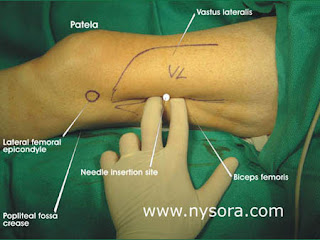I guess what I am trying to say is would you feel comfortable doing a nerve block for a chronic pain patient to give them some pain relief?
I know u r new to u/s guided nerve blocks...maybe you will change your practice?
The question regarding nerve block for chronic pain pts is, what's the end point? they might feel better for 12-18 hours, but what about after that? are you gonna keep doing blocks? it's just not a practical solution. For these chronic (esp cancer) pain pts, they are gonna need systemic pain meds (multimodal, narcs, neuromodulators, NSAIDS, maybe steroids, ? bisphosphonates) and depending on the situation, maybe some interventional procedure (pump/stim/ablation/etc). The treatment plan is not going to be in place by the time your block wears off.
Regarding coag status and PNBs, ASRA dropped some heavy (though not particularly evidence based) recs last year basically saying that we should treat PNBs like neuraxials, at least from a coag perspective ("for deep plexus and peripheral nerve blocks we recommend that recommendations regarding neuraxial techniques be similarly applied"). US technology was not addressed. In this respect, you can look at the ASRA anticoagulant guidelines. They have a wealth of info about what is kosher regarding how long after plavix/heparin/lovenox/blahblahblah you should wait to do a neuraxial procedure (and by extension, a peripheral nerve block), but notably absent is an INR cutoff-it just says "normalized- and a platelet cutoff. THese you just ahve to decide for yourself. Alos, they don't provide any real guidance on newer agents like Pradaxa (basically says "better be careful!").
Regional Anesthesia & Pain Medicine:
January/February 2010 - Volume 35 - Issue 1 - pp 64-101
doi: 10.1097/AAP.0b013e3181c15c70
Asra Practice Advisory
Regional Anesthesia in the Patient Receiving Antithrombotic or Thrombolytic Therapy: American Society of Regional Anesthesia and Pain Medicine Evidence-Based Guidelines (Third Edition)
Horlocker, Terese T. MD*; Wedel, Denise J. MD*; Rowlingson, John C. MD†; Enneking, F. Kayser MD‡; Kopp, Sandra L. MD*; Benzon, Honorio T. MD§; Brown, David L. MD∥; Heit, John A. MD*; Mulroy, Michael F. MD¶; Rosenquist, Richard W. MD#; Tryba, Michael MD**; Yuan, Chun-Su MD, PhD††
I personally don't feel the risk of doing, say, a SS fem block in somebody with an INR of 1.3 or a popliteal in someone with platelets of 90,000 is crazy, but it totally depends on the situation. I think the ASRA guidelines are going to get more strict regarding PNBs. Just my intuition. Anyway, hope that's helpful.

